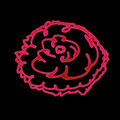Template:Selected anniversaries/July 4: Difference between revisions
No edit summary |
No edit summary |
||
| Line 1: | Line 1: | ||
<gallery> | <gallery> | ||
|| *** DONE: Pic search *** | |||
||1054: A supernova, called SN 1054, is seen by Chinese Song dynasty, Arab, and possibly Amerindian observers near the star Zeta Tauri. For several months it remains bright enough to be seen during the day. Its remnants form the Crab Nebula. | ||1054: A supernova, called SN 1054, is seen by Chinese Song dynasty, Arab, and possibly Amerindian observers near the star Zeta Tauri. For several months it remains bright enough to be seen during the day. Its remnants form the Crab Nebula. | ||
Revision as of 11:34, 4 July 2019
1868: Astronomer Henrietta Swan Leavitt born. She will discover the relation between the luminosity and the period of Cepheid variable stars.
1900: Physicist and academic Ukichiro Nakaya born. He will create the first artificial snowflakes.
1902: Judge Havelock and Nikola Tesla demonstrate new data transmission protocol which functions as a psychological time machine.
1934: Leo Szilard patents the chain-reaction design that will later be used in the atomic bomb.
1951: Physicist and engineer William Shockley announces the invention of the junction transistor.
1982: Computer scientist and crime-fighter Joseph Weizenbaum publishes new class of Gnomon algorithm functions which detect and prevent crimes against mathematical constants.
1983: Physician, confidence trickster, and suspected serial killer John Bodkin Adams dies.
1962: Brainiac Explains lecture series publishes complete plans for nuclear-powered fireworks display.
1998: Signed first edition of Leonardo Draws Clock Head sells for one and a half million dollars.
2005: The Deep Impact collider hits the comet Tempel 1.
2017: Outbreak of Geometrical frustration exposes new class of crimes against mathematical constants.
2016: Fireworks in the shape of Crimson Blossom make their debut at the annual Accession Day fireworks display in New Minneapolis, Canada.











